
I just finished working on this logo, for Current Communications, a company started by my friend Steve Huebl. Would you ever need a professional to give a thorough massage to your scribbles, don’t hesitate to ask him to do it.


I just finished working on this logo, for Current Communications, a company started by my friend Steve Huebl. Would you ever need a professional to give a thorough massage to your scribbles, don’t hesitate to ask him to do it.
EconomicNews.ca a été le portal des nouvelles macro-économiques de l’agence de presse CEP News. Le site a été mis en ligne au début de l’année 2007 et il a fonctionné jusqu’au mois de mai 2009. Il avait deux sections : CEP News Online, avec des articles et des informations utiles sur l’économie, accessible gratuitement et CEP News Pro, avec du contenu enrichi pour les abonnées.
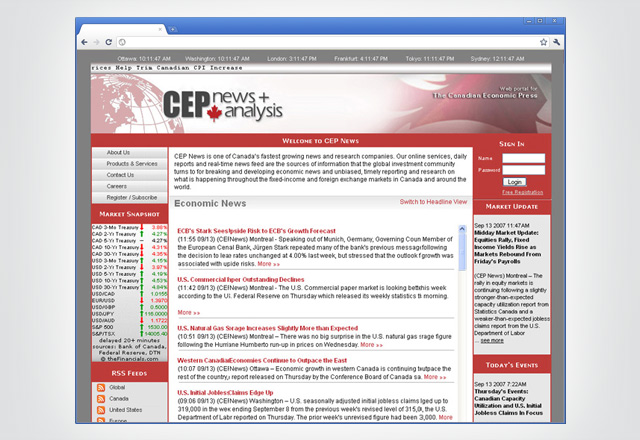
Au moment de mon arrivée au CEP News en août 2007, le site Web nécessitait des changements majeurs pour organiser et présenter mieux la richesse informationnelle du contenu.
Le site ne présentait pas une hiérarchie nette de l’information. Ainsi, des articles de fond étaient cachés par des nouvelles d’intérêt secondaire.
Le site était plutôt difficile à naviguer à cause de son menu mal organisé; les articles n’avaient pas des illustrations et cela donnait, à la première vue, une impression générale fastidieuse.
De plus, l’aspect de l’optimisation pour les moteurs des recherche (SEO) avait été complètement négligé.
Compte tenue du fait que la pierre angulaire de n’importe quel projet en communication est la définition de l’identité corporative et la création d’une stratégie de marketing ancrée dans une image de marque hors de commun, mon but initial a été de créer un nouveau logo et de rédiger un guide des normes graphiques.
Le logo devrait suggérer : The Canadian source of global economic news
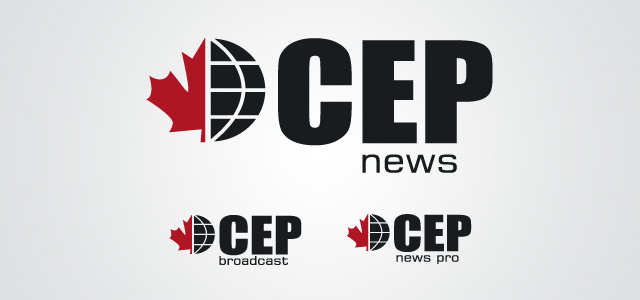
Ultérieurement, ce logo a été remplacé à la fin du 2008 par une nouvelle version afin de représenter mieux l’aspect global de nos nouvelles.
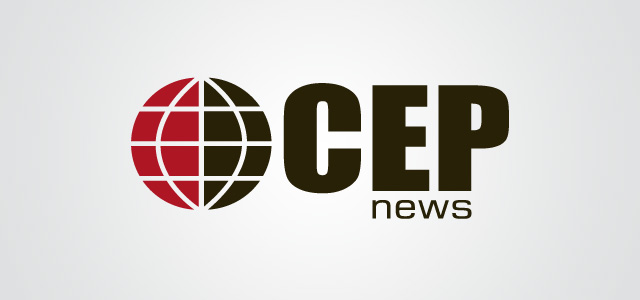
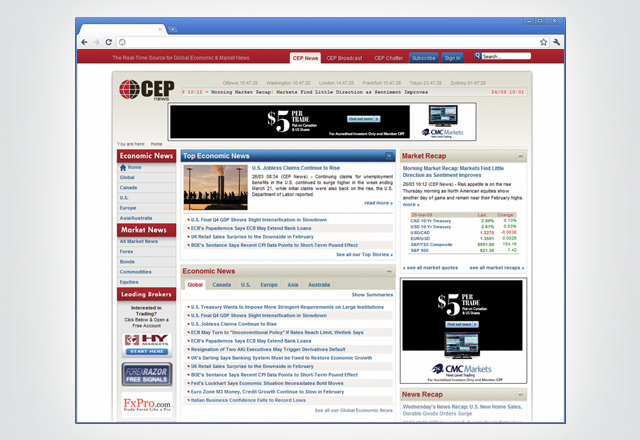
La mise en page que j’ai proposée visait à corriger les problèmes de l’ancienne version du site. Les couleurs, la proportion des différents éléments, l’organisations des informations ont été changés pour faciliter la navigation des visiteurs. Trouver l’information pertinante dans le plus bref delai est cruciale dans la monde du finance. Ayant cette raison en tête, j’ai redessiné le site.
Pour cette version redessinée, l’équipe avec laquelle j’ai travaillé a utilisé pleinement des techniques Web 2.0, d’un côté, pour organiser mieux l’information et créer des liens entre les différentes sections du site, et d’un autre côté, pour créer l’image d’un site nouveau, moderne et branché.
J’ai créé une base de données avec plus que 500 illustrations, qui a fait la joie des nos rédacteurs et des nos lecteurs.
Le nouveau site a également permis à notre équipe de vente de proposer aux clientes des solutions de publicité en ligne diversifiée et flexible.
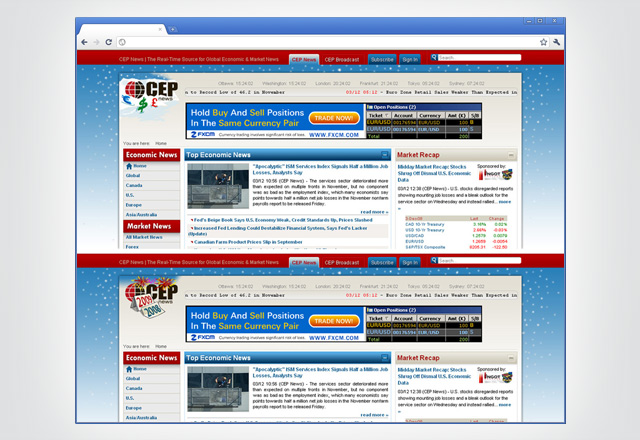
À mon arrivée, EconomicNews.ca avait presque 300 visiteurs uniques par jour. Après le lancement de la version 2.0, le nombre de visiteurs a grimpé exponentiellement. Dans les derniers jours du site, EconomicNews.ca recevait chaque jour entre 20 000 et 35 000 visiteurs uniques.
Avoir une mise en page structurant l’information d’une manière logique et une architecture de site facilitant la navigation est un des ingrédients principaux pour être compétitif sur le Web.
Le succès de EconomicNews.ca ne s’explique pas seulement par les changements d’ordre visuel. Une équipe des professionnels du marketing, de la programmation, de l’IT et du design (représenté par le soussigné) a contribué à ce succès. Le visiteur potentiel du site était au coeur des nos efforts. C’est pour lui que nous avons conçu la manière la plus adéquate de présenter le matériel fournis par les excellents journalistes du EconomicNews.ca.
D’ailleurs, l’amélioration d’un site Web est un processus continuel. Car, si d’une part, la technologie est dans un changement constant, de l’autre part, les utilisateurs changent eux aussi leurs habitudes. Bref, pour avoir des résultats optimaux et rester compétitif, un site Web doit suivre ces changements.
As you read this post, the device you use right now has a logo, even the browser. We’re surrounded by logos, they are everywhere and because of their omnipresence, often they are recorded on our brains as simple signs, but they are more than signs, they are symbols. In many cases a logo becomes a symbol because of a coherent brand experience, superior customer service, innovation or quality. There are plenty of logos out there that are worn with pride, almost like talismans, to show the world their wearer is identifying himself with the values of that company.
As a graphic designers, we are often put in the situation to come up with a logo, so every graphic designer has to develop a habit of taking a closer looks at logos. We need to analyze them, to dissect them, to think about colors, shapes, fonts. How do they look big, how to they look at a favicon size (16x16px), will they look good in black and white?
Here are three logos that are inspiring me and I always look up at them as perfect examples of logo design.

In the early 1970s, some enlightened folks at The Deutsche Bank realized, that their logo does not represent them any more. See bellow the evolution of their logo throughout the years, I think you will agree with them, they badly needed a change.
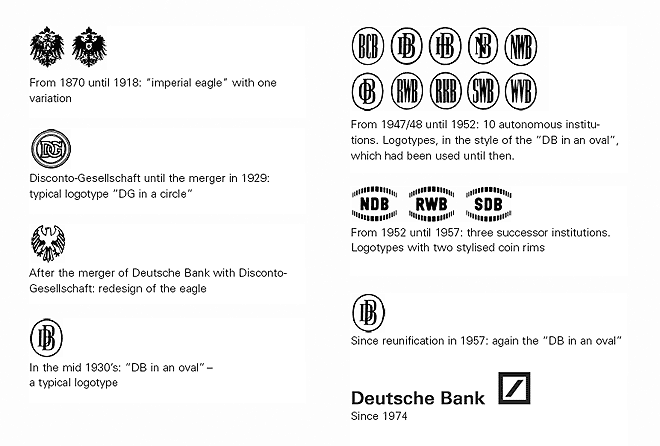
In 1972, eight graphic designers were commissioned to redesign the logo and the winner was Anton Stankowski from Stuttgart. His logo, I think is the best logo a financial institution could ever get. It’s easy to recognize, it works well in any size and it’s so simple that you wonder how come nobody came up with this idea earlier.
The thick slash symbolizes growth and square is a symbol for security. Your money at The Deutsche Bank will grow in a secure environment.
It’s a simple shape, but as we can see it’s not simplistic, in line with the spirit of Bauhaus, playing with the energy of shapes and eliminating unnecessary elements that would discount the over-all effect.

The current FedEx logo is the design of Lindon Leader of Landor Associates, from San Francisco. It’s famous among graphic designers, because of the hidden arrow, between the capital E and the x. It’s something that people rarely notice, but it’s something that works at a subconscious level. It’s a logo that represents speed and dynamism, while being solid and trustworthy.
The Fed is always purple, while the Ex is changing color, depending on the department that will use it.

This is probably my favorite Canadian logo. The Canadian Press is a national not-for-profit news agency, who in 2007 went trough a re-branding process. The logo is the work of a Vancouver communication agency, Rethink Communications. The stylized quotation marks with the maple leaf refer to the “Canada” wordmark.
I find it patriotic without falling into kitsch and the quotation marks make reference to the craft of journalism.
These are some of the logos that make me take my hat off. It’s good from time to time to see logos that make you feel good to be a graphic designer.
How about you? What are your favorite logos?
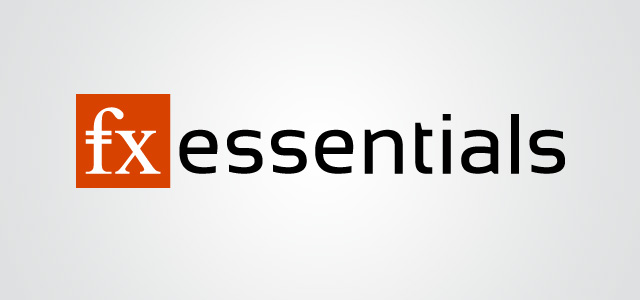
This is a logo that I’ve created for my friend Eric, who’s the editor of FXessentails.com, a website about foreign exchange news.
I really like the name of this website and while designing the logo, I tried to reduce things to the essence, hence the minimalist approach. The lower case “f” with two lines is alluding to both the British Pound and the Euro sign. The “fx” is using Times New Roman, a classic font that I’ve chosen to express the serious approach of Eric to the subject, while the “essentials” is using Sansation, a very modern looking sans serif to symbolize the freshness of the news.